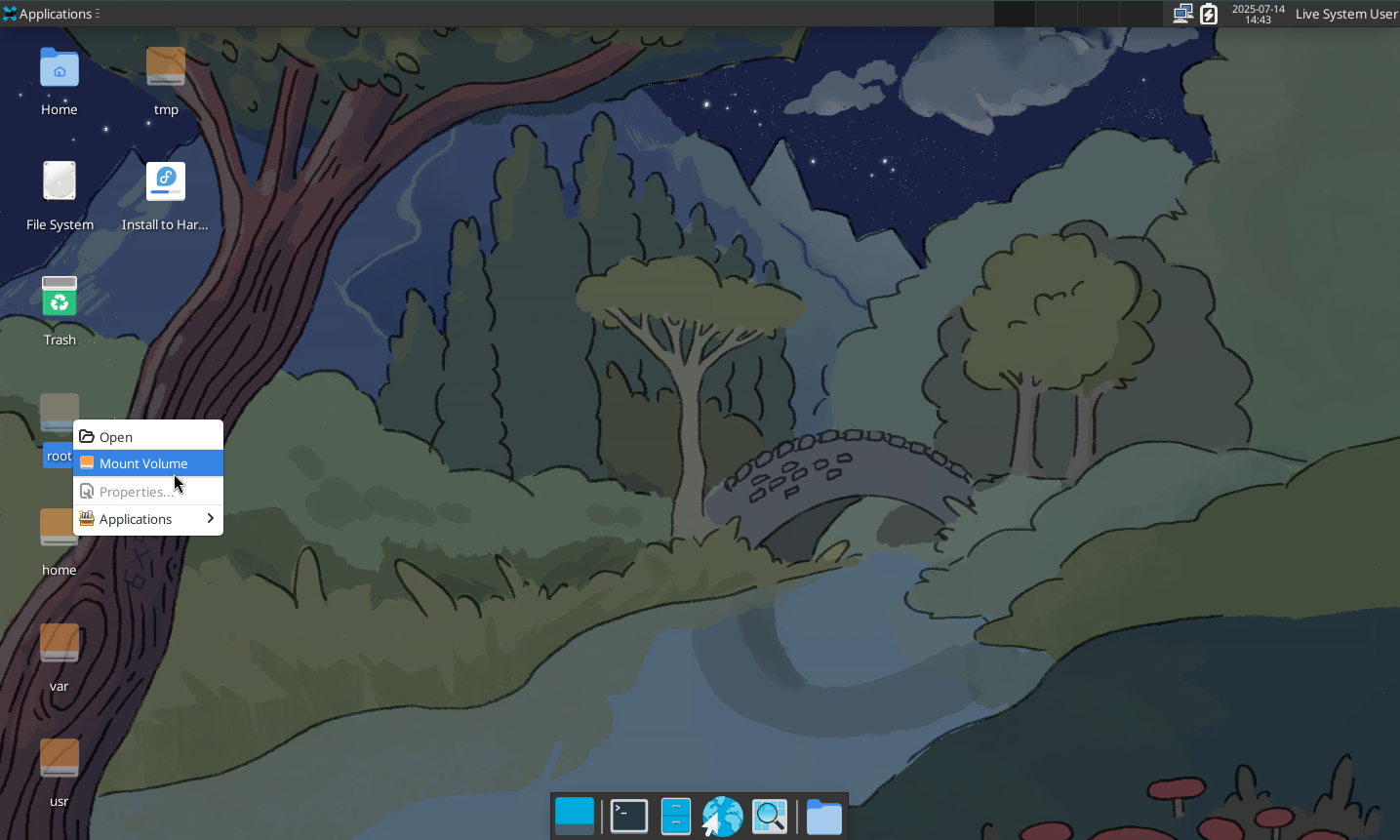
Using a Live USB for Linux recovery
Over the years I’ve managed to need recovery mode quite a few times. Most of those instances were self-inflicted and provided me with many learning opportunities. I recently had another chance to learn when I was experimenting with SELinux on my primary workstation, and borked it so it wouldn’t boot.
I had made a change to the /etc/selinux/config file and it was clear that was the root cause of the problem. I’ve previously entered recovery mode using the chroot command for a problem that required rebuilding the GRUB configuration file, but that procedure was a bit more complex due to the nature of the problem. This procedure is easier because it doesn’t require chroot.
When booting the Fedora 42 Live USB device, the desktop shows all the system storage devices and the filesystems as separate icons on the left side. You can see this in Figure 1.

You can also see in Figure 1, that I’m using the desktop to mount the root filesystem to /run/media/liveuser, which is the default location in the Live USB. The entire root directory and its contents are available at /run/media/liveuser so I was able to edit the /etc/selinux/config file to fix the problem, and reboot.
I could also have mounted other of the host system’s filesystems had that been necessary.